I'll show you how to use a Kreg Jig, whether it's the inexpensive Kreg Jig R3 and the fancier Kreg Jig K5, so you can choose the best one for your needs.
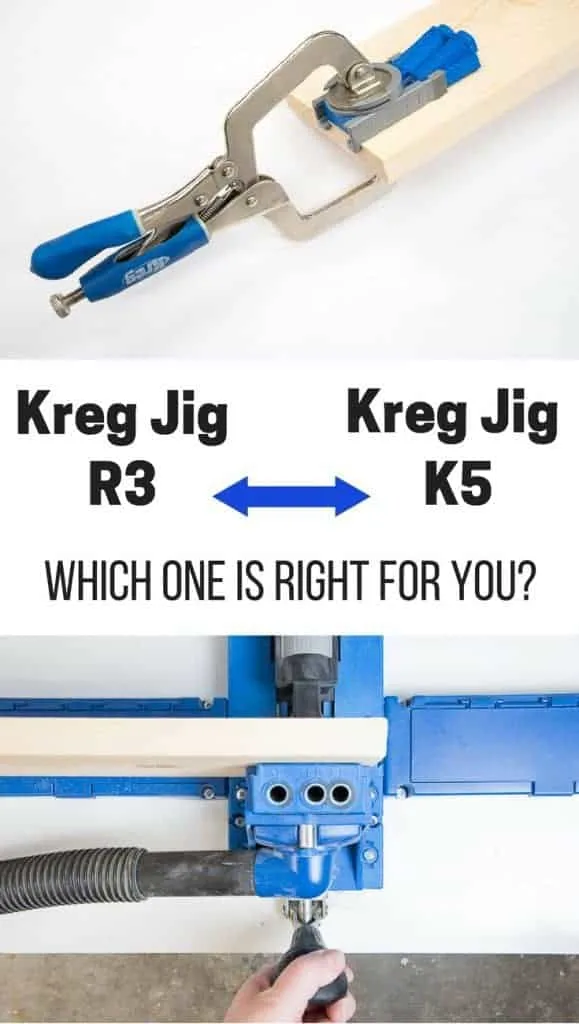
Pocket holes are an easy way to get started in woodworking. If you don't know how to use a Kreg Jig, or are on the fence about which model to buy, you'll find all the answers you need here!
If you've downloaded any of my woodworking plans, you know they typically call for pocket holes in at least one step. They're a fast, easy way to create strong joinery with hidden screws.
But before you dive in to your first woodworking project, you need to know how to use a Kreg Jig! I'll show you how two different models work, weigh the pros and cons of each, and help you get started building your own furniture! After that, be sure to check out my ultimate guide to pocket holes to see how to put those pieces together.
This post contains affiliate links for your convenience. Purchases made through these links may earn me a small commission at no additional cost to you. Please visit my disclosures page for more information.
How to Use a Kreg Jig R3
The Kreg Jig R3, also known as the Kreg Jig Jr., is a great introduction into the world of pocket holes, and is perfect for beginners on a budget. Recently, it's been replaced with the Kreg Jig 320, which has the same features.
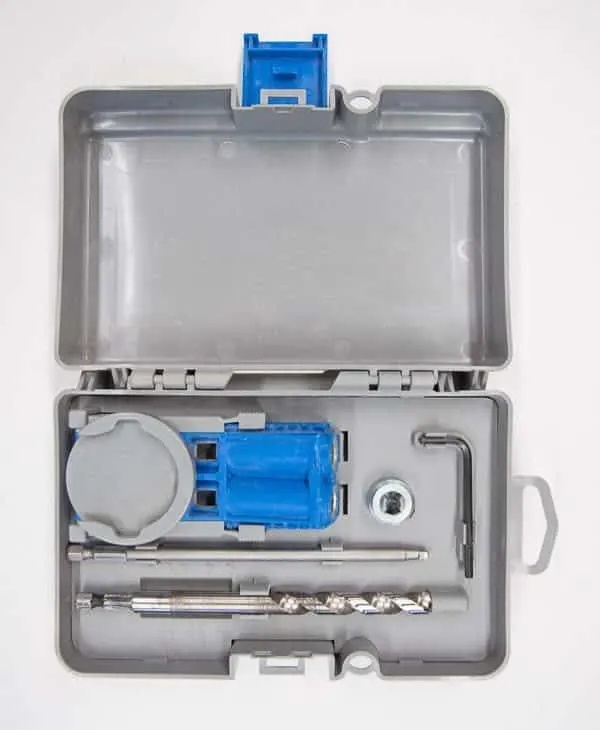
The Kreg Jig R3 comes with two bits for your drill, the jig itself, and a clever case that serves as more than just storage. The top bit shown here is used for creating the holes, and the other is for driving screws into the wood.
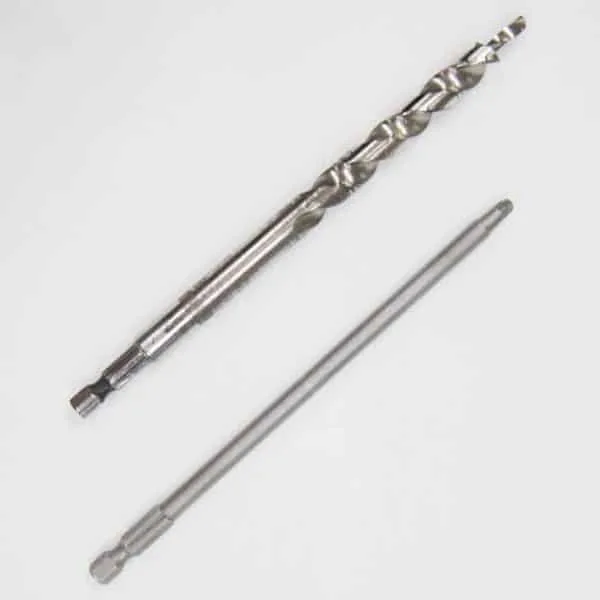
Pocket holes are always drilled towards the edge of the board, on the side that will be hidden from view. Measure the thickness of the board, and adjust the gray sliders on each side of the jig to match that dimension. It's hard to see, but there are two arrows in the middle of the jig that point to the dimensions on the sides.
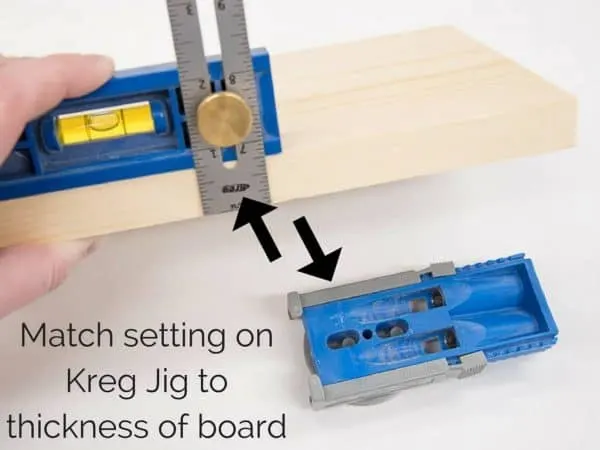
Hook the gray sliders on the end of the board, and clamp the jig in place. You can use an inexpensive bar clamp, or one of the Kreg face clamps with a round end that fits perfectly in the round platform of the jig.
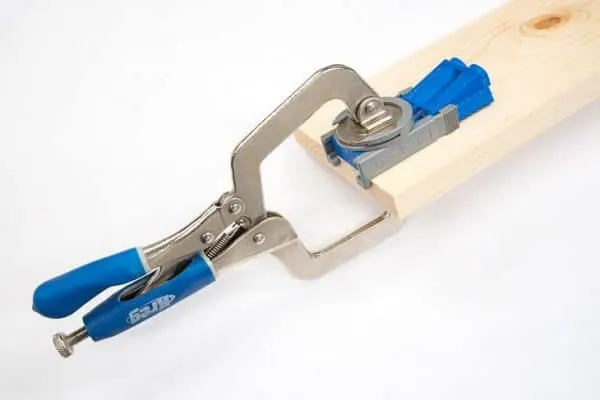
Next, adjust the depth of the drill bit. Insert the hex key into the hole in the collar of the drill bit to loosen it.
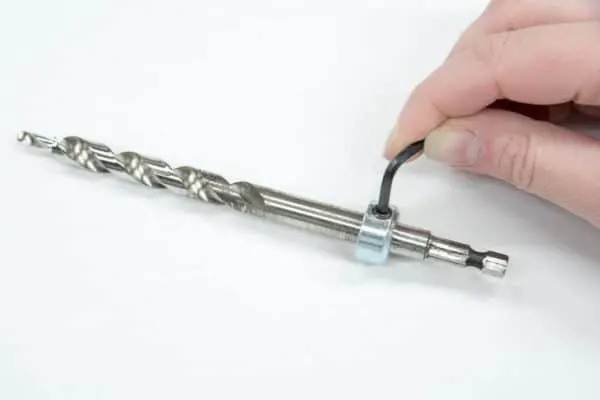
Place the drill bit with the collar in the recessed area of the R3 case. Line the top of the collar up with the marking for the thickness of your board, and tighten in place.
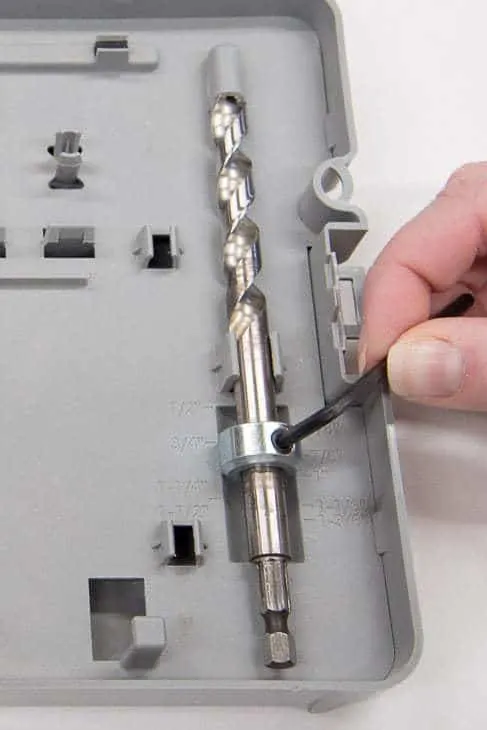
Insert the drill bit into your drill chuck and tighten. Then stick the bit into one of the holes in the R3 and drill until the collar reaches the jig. Repeat in the other hole.
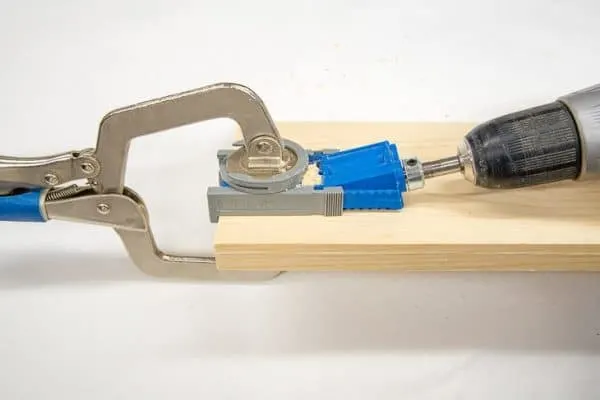
That's all there is to it! You can learn about how to use pocket holes to join two boards together in my other tutorial. The process is the same no matter which jig you use.
How to Use a Kreg Jig K5
One of the drawbacks to the Kreg Jig R3 or the 320 is that you have to reclamp it every time you want to make a new hole. When you're building something with a LOT of pocket holes, it can get pretty tedious!
The Kreg Jig K5, and the new Kreg Jig 720, has a built in clamp, making the process much faster. When you have a project like my rocket bookshelf with pocket holes all over the place, it's a lifesaver!
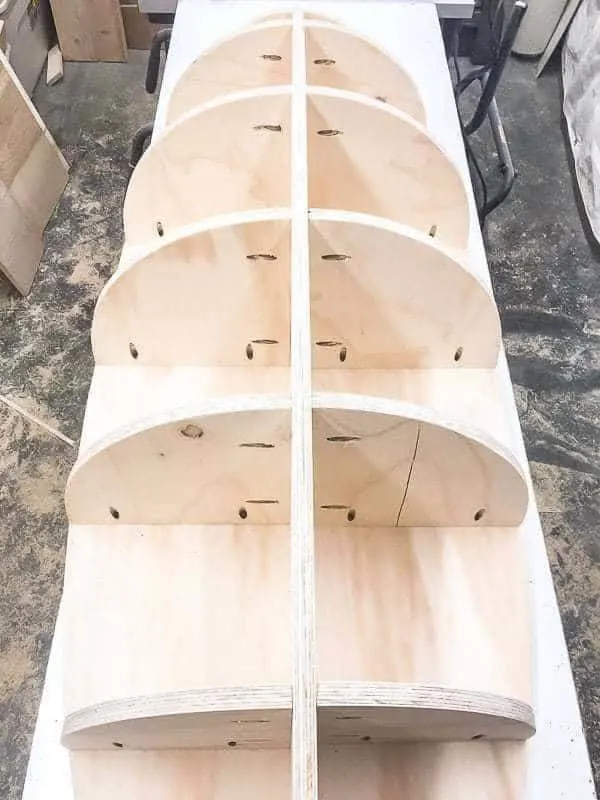
One of my favorite features of the K5 is the dust port. You can easily attach a shop-vac to suck away all that sawdust. Drilling pocket holes makes a huge mess! Anytime I can skip cleaning and move straight to the next step, I'll take it!
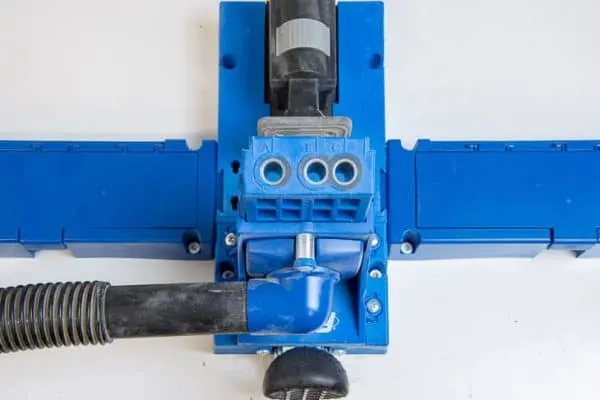
The Kreg Jig K5 comes with two "wings" to store all the bits and pieces you need to make pocket holes. The less expensive K4, or the new Kreg Jig 520, doesn't have these wings, but is otherwise pretty similar.
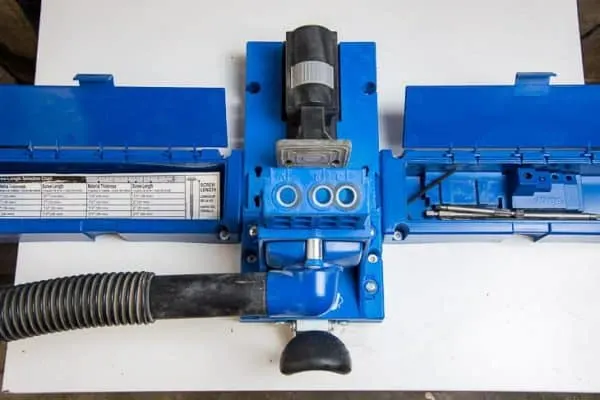
The wings are for more than just storage, though. They serve as support for longer boards so they stay flat as you drill the holes.
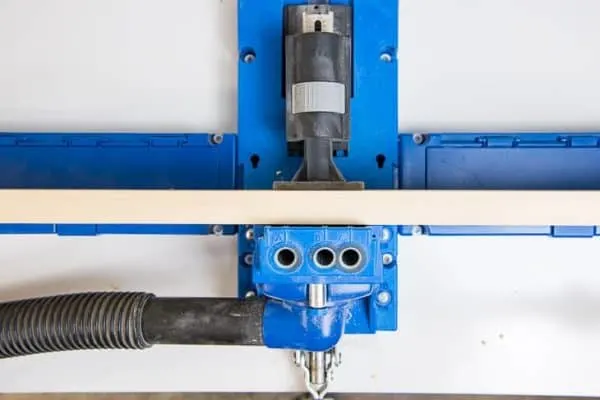
Adjusting the settings on the K5 is easier than the R3. First, adjust for the thickness of the board by pulling on the knob in front and raising or lowering the holes.
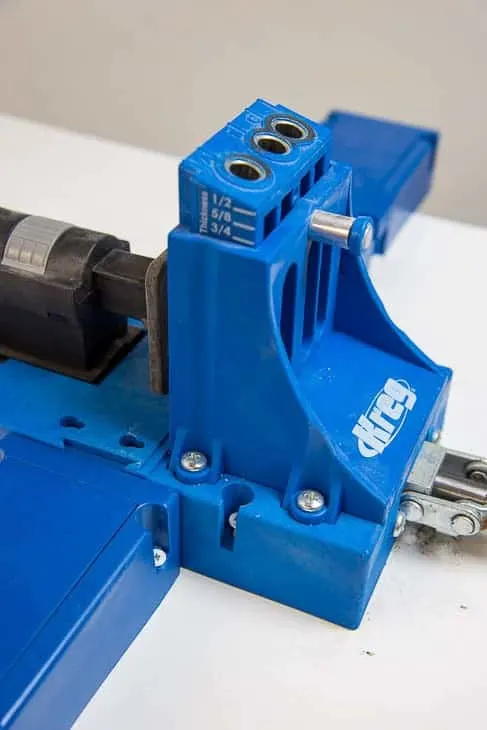
Unlike the R3, the K5 uses the length of the screw to determine the position of the collar on the drill bit. There's a chart included with the K5 that fits inside the wings for easy reference. This little step guide makes adjusting the stop collar super easy!
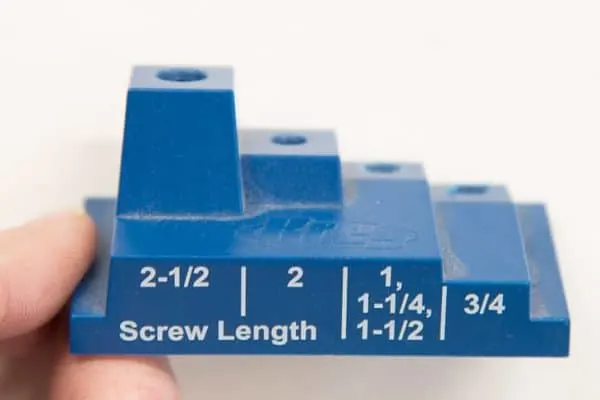
Determine which step you're going to use, and set it under the drill hole. Loosen the collar on the drill bit and drop it into the hole over the step. The bit tip will fit in the hole on the step, and the collar will rest at the correct spot above. Tighten it with the hex key.
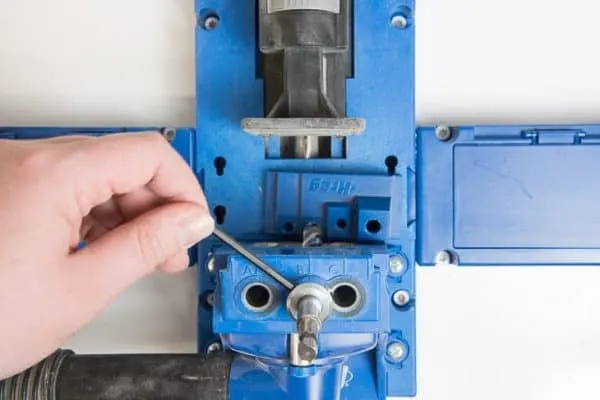
The clamp mechanism is easy to adjust to any thickness of wood. Insert your board between the drill holes and the clamp. Press the gray button on the back of the clamp, and slide it until it touches the wood. Once this half of the clamp is set, it will stay at this setting until you switch to a different wood thickness.
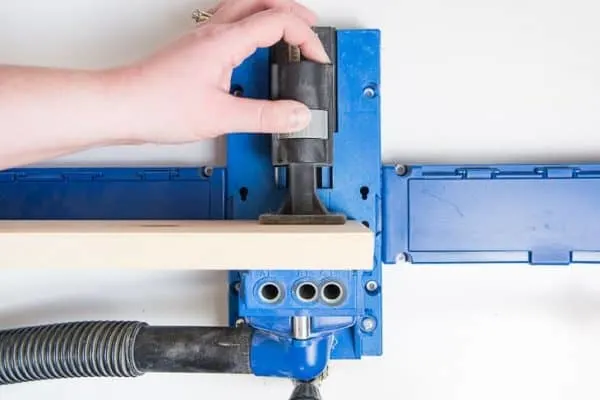
Pull down the lever in the front of the jig to clamp the wood tightly in place.
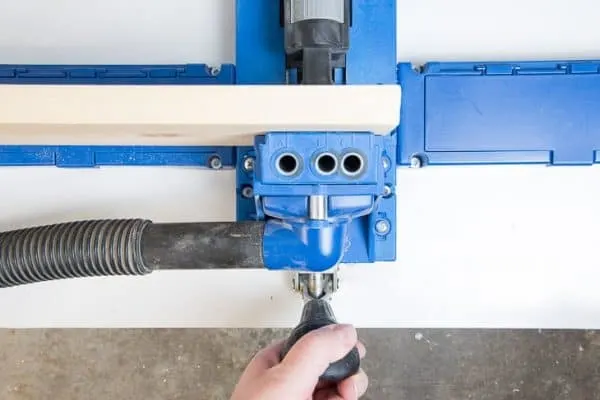
Now you're ready to drill! Holes A and C are the perfect distance apart for 2x4 lumber, so you only have to clamp once to drill both holes. B and C are close enough together to use on a 2x2!
Differences between the Kreg Jig R3 and K5
Now that you know how to use a Kreg Jig, how do you know which one is right for you? While the Kreg Jig R3 and K5 both accomplish the same goal of helping you drill the perfect pocket hole, their methods and uses are a little different. I keep both of them in my workshop.
The Kreg Jig R3 is perfect for a beginner who doesn't want to shell out a lot of money when first starting out. It's easier to see exactly where you're putting the hole, which helps when you're puzzling through how to build something for the first time.
But the R3 has its place in an advanced woodworker's shop as well. Putting pocket holes around the perimeter of a large piece of plywood is almost impossible with the K5. But it's a cinch with the R3! I used it on my headboard to attach the frame to the plywood backing.
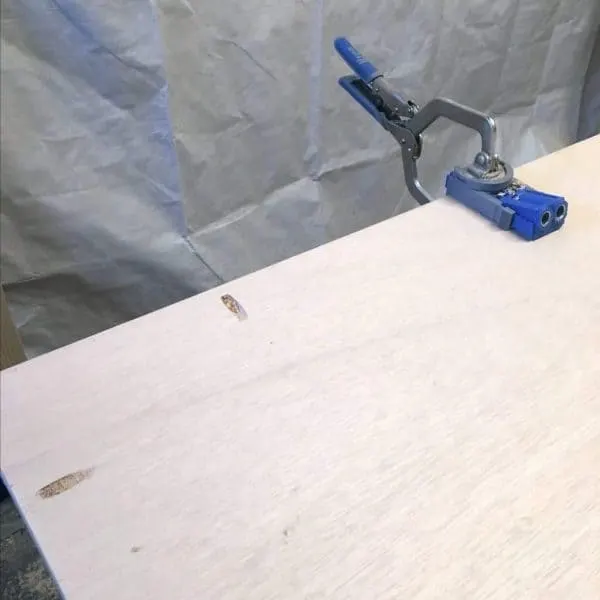
The Kreg Jig K5 is best for drilling lots of holes quickly and efficiently without making a mess. If you're building a lot of furniture, you're going to want to upgrade eventually. My K5 work station saves me so much time!
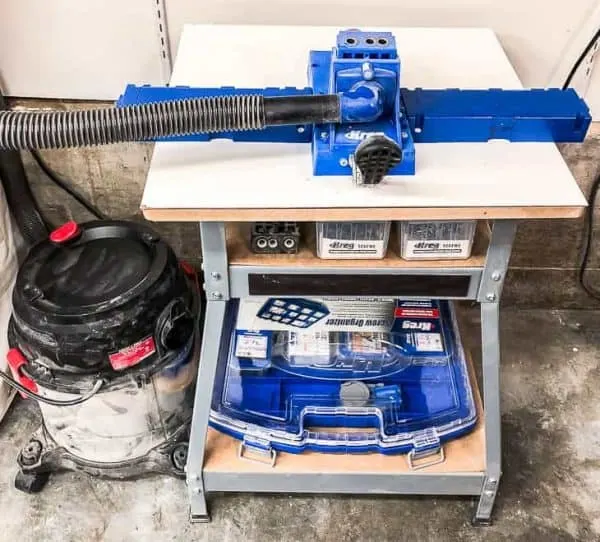
Next, check out my ultimate guide to pocket holes! It has all the information you need to join together those boards properly so your build looks professional.



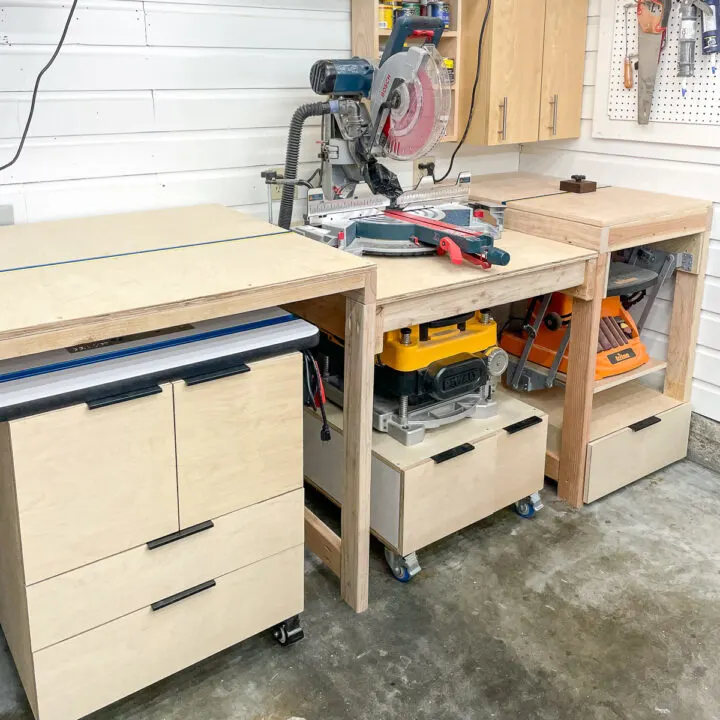
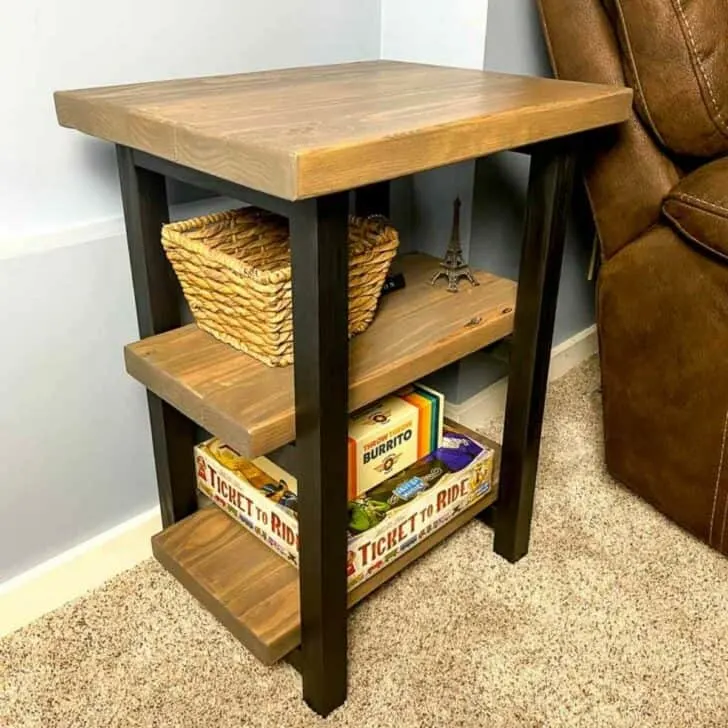
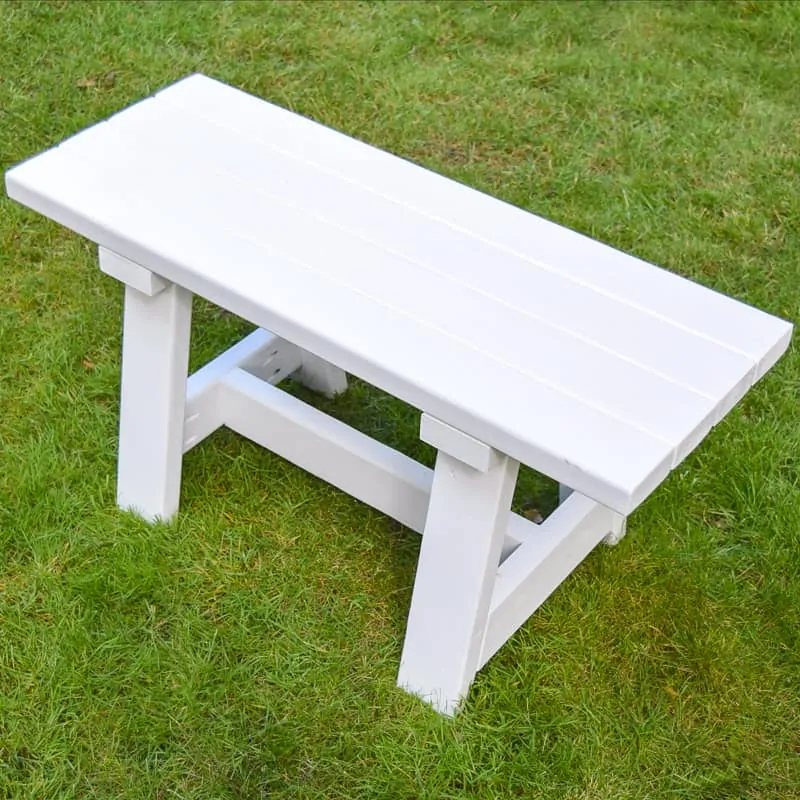
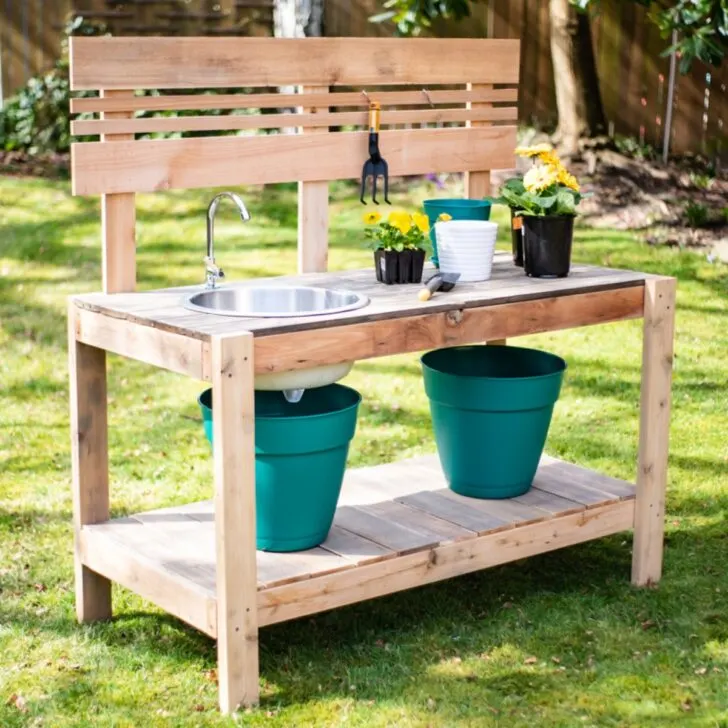
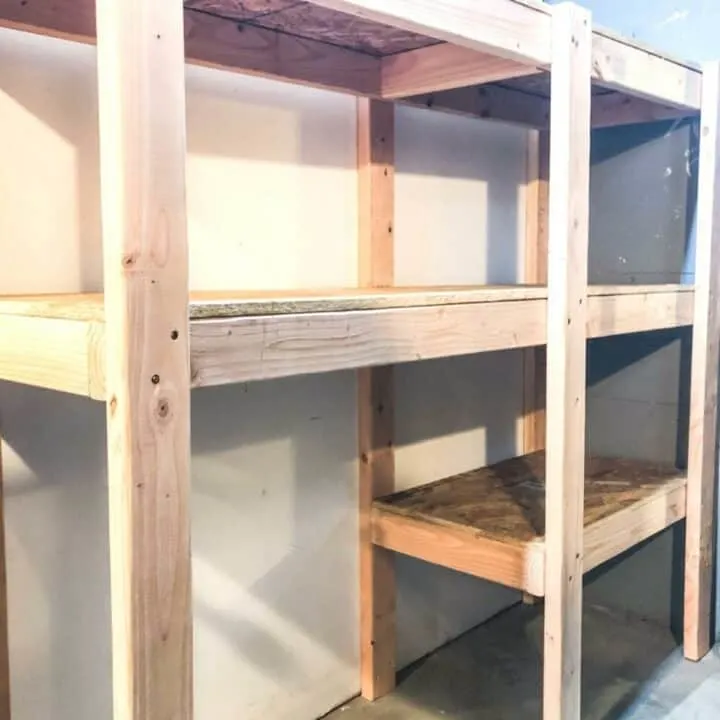
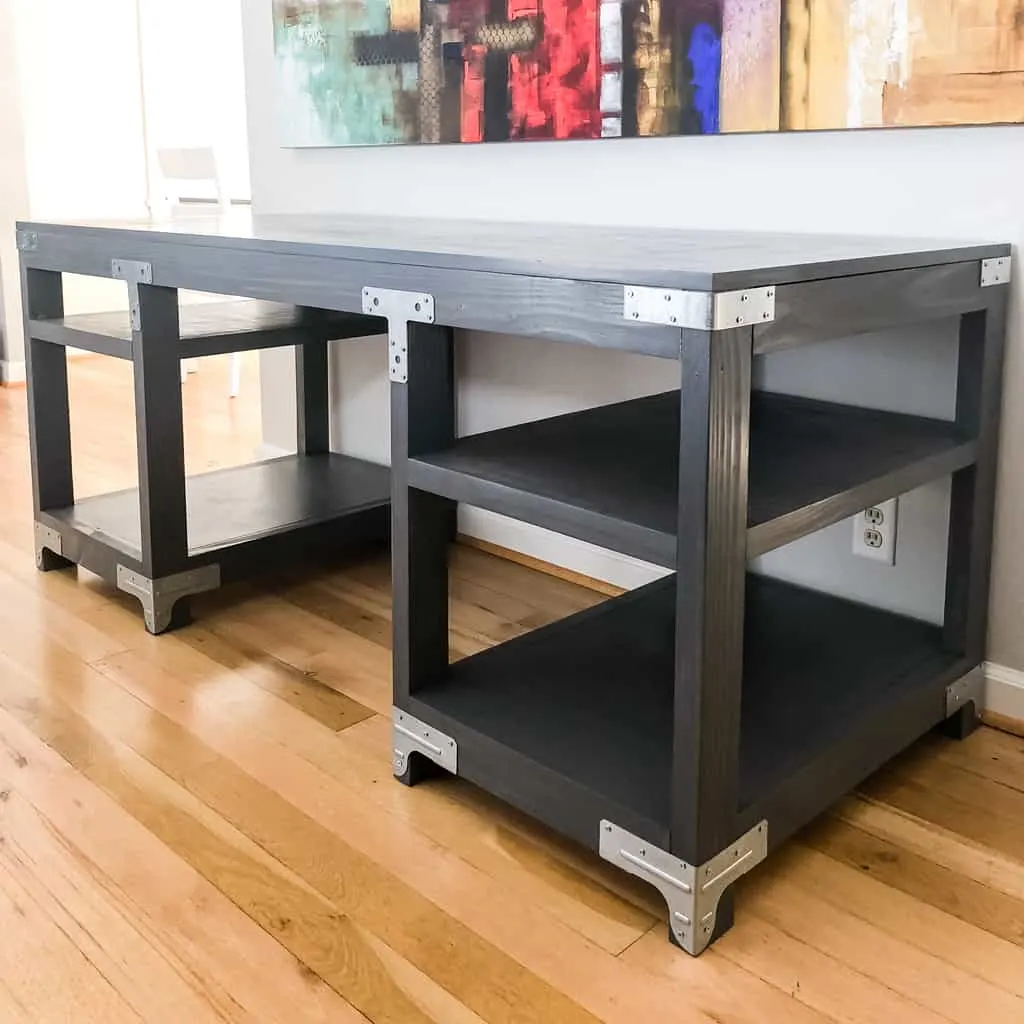
Ruthie
Saturday 2nd of June 2018
I will soon be using my new jig R3, first time anything!! I will be placing slats only 1/2 inch onto a base made from 1 1/2 board. How do I ensure the screw will not go through the 1/2 inch slat?
Michael Leaver
Sunday 20th of May 2018
I'm new to wood working and have recently purchased the KREG R3 for home projects. This article was very helpful and I'm sure that as I continue into my retirement years that it will provide me with many great memories. There are plenty of clamping tools that I will have to obtain yet but at least this is a great start. Thank You.
Allen Michael
Tuesday 27th of February 2018
I agree that knowing how to use a keg jig is a good way to get started on the basics of woodworking. So thank you for sharing this, Vineta! Very detailed instructions on how to use the tool.
Corey Snapp
Saturday 10th of February 2018
I have been using one of the original Kreg pocket hole and had no idea theres a newer one. Maybe I should upgrade to be faster.
Carolann
Wednesday 24th of January 2018
Wow, never knew about these tools. What a great learning experience!